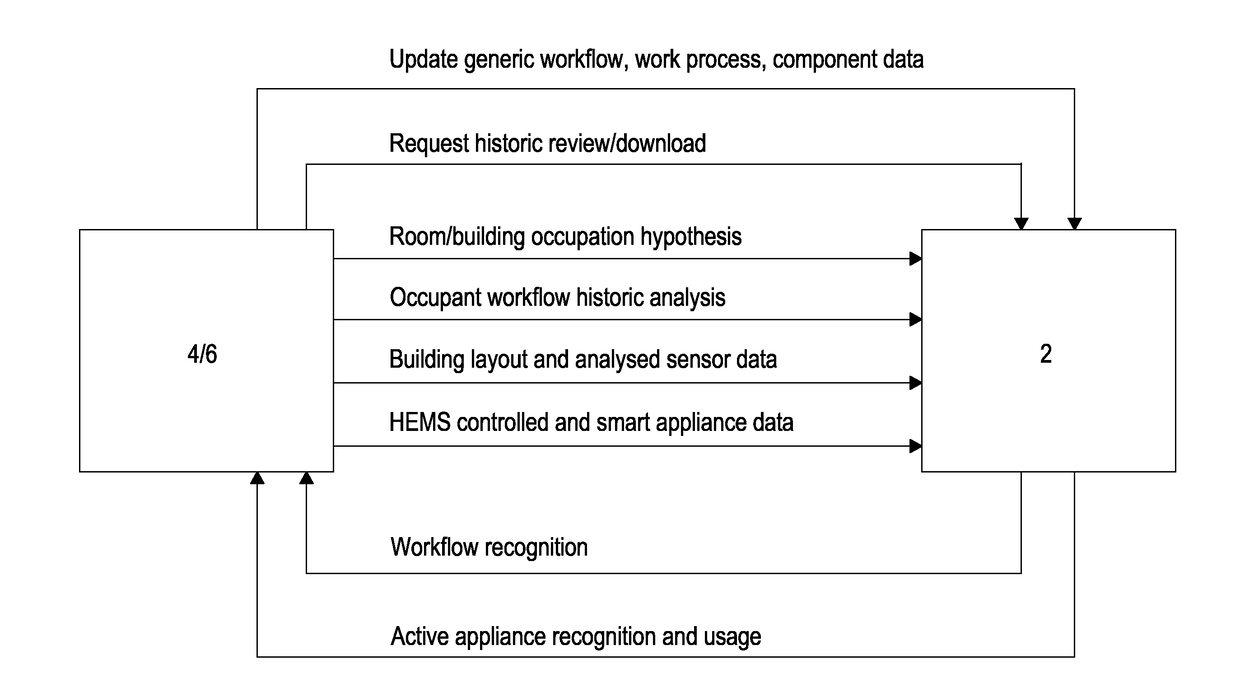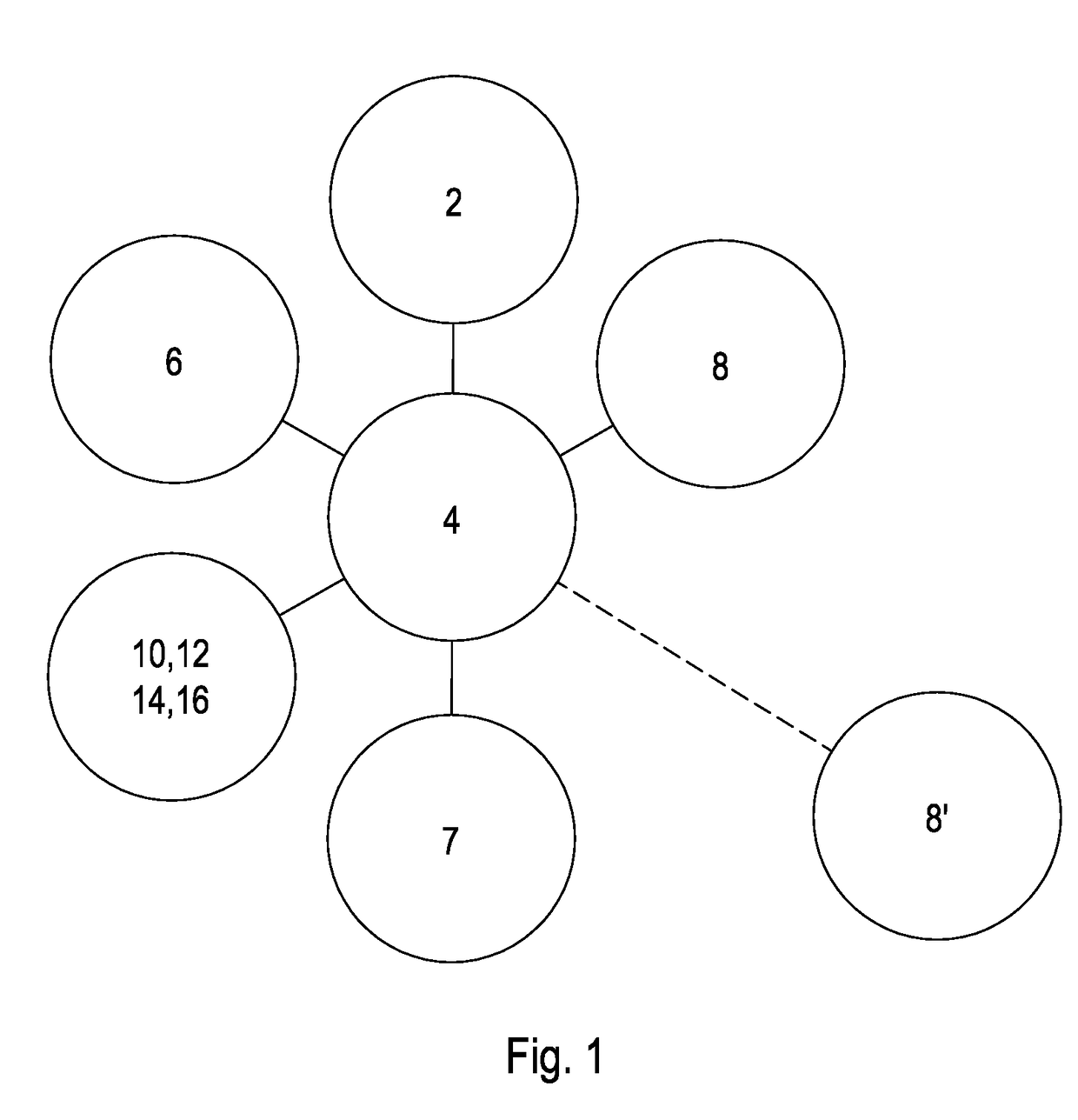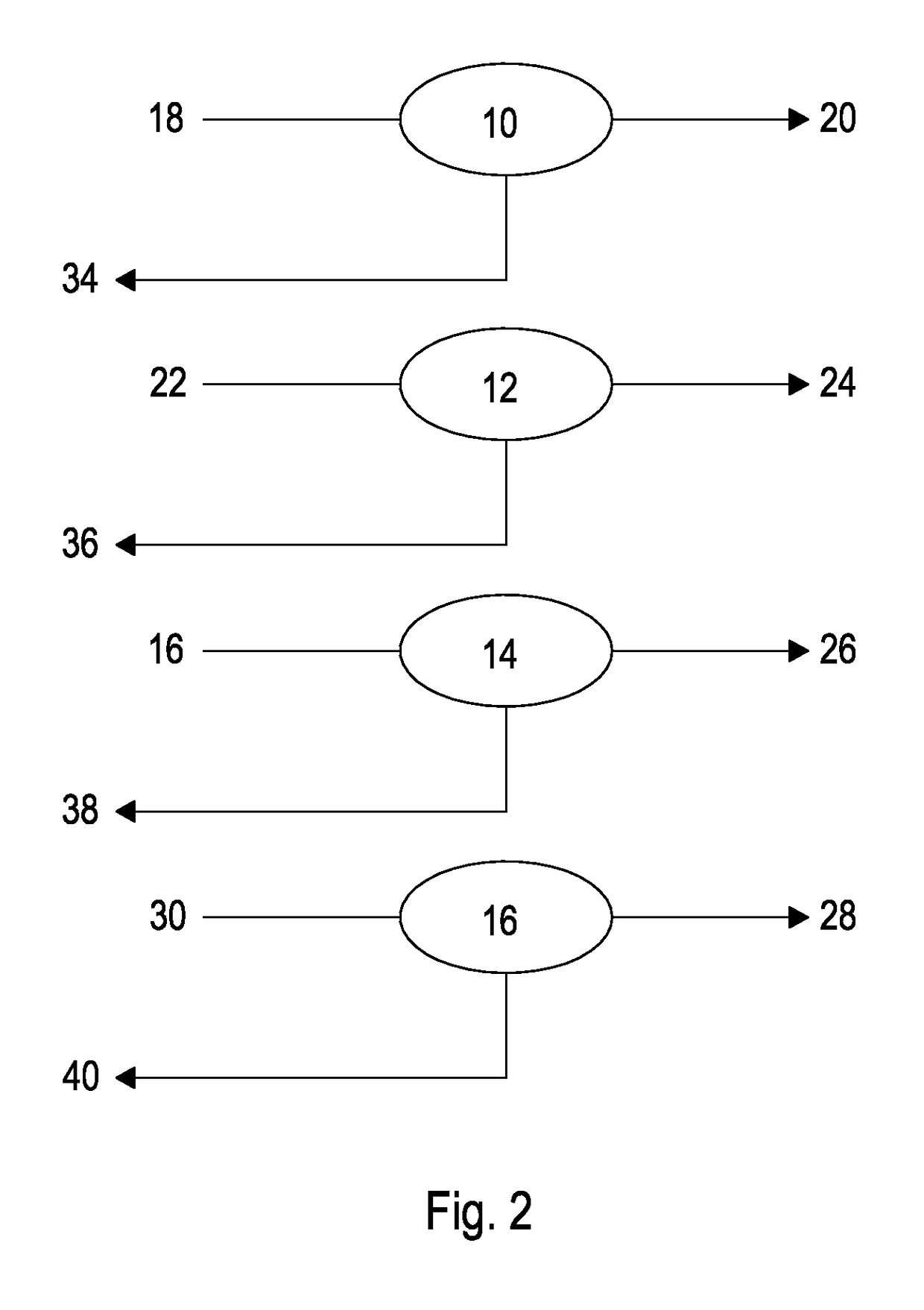Method and System of Monitoring Appliance Usage
a technology of monitoring system and appliance usage, applied in the field of method and system of monitoring appliance usage within a building, can solve the problems that the prior art does not discuss or teach the implementation of these functionalities in a coherent way, and achieve the effect of managing energy use effectively and low cos
- Summary
- Abstract
- Description
- Claims
- Application Information
AI Technical Summary
Benefits of technology
Problems solved by technology
Method used
Image
Examples
Embodiment Construction
[0042]Embodiments of the invention will now be described, by way of example only, with reference to the Figures of the accompanying drawings in which:
[0043]FIG. 1 shows a schematic representation of an appliance recognition unit in use with a HEMS;
[0044]FIG. 2 shows a schematic representation of utility measurement;
[0045]FIG. 3 is a schematic representation of a finite state analysis of a utility signal channel;
[0046]FIG. 4 is a schematic view of communications between the appliance recognition unit and other modules in a HEMS;
[0047]FIG. 5 is an overview of the hierarchy of appliance operation;
[0048]FIG. 6 illustrates work processes and components in a generic dishwasher;
[0049]FIG. 7a is a graphical representation of daily operation of a bedroom light by month;
[0050]FIG. 7b is a graphical representation of daily operation of a security light by month;
[0051]FIG. 8a is a graphical representation of daily operation of a freezer by room temperature;
[0052]FIG. 8b illustrates three differ...
PUM
 Login to View More
Login to View More Abstract
Description
Claims
Application Information
 Login to View More
Login to View More - R&D
- Intellectual Property
- Life Sciences
- Materials
- Tech Scout
- Unparalleled Data Quality
- Higher Quality Content
- 60% Fewer Hallucinations
Browse by: Latest US Patents, China's latest patents, Technical Efficacy Thesaurus, Application Domain, Technology Topic, Popular Technical Reports.
© 2025 PatSnap. All rights reserved.Legal|Privacy policy|Modern Slavery Act Transparency Statement|Sitemap|About US| Contact US: help@patsnap.com



